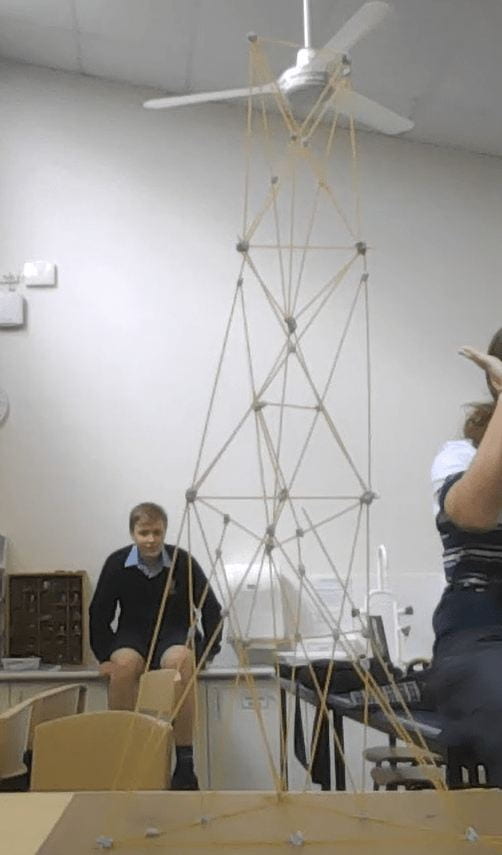
Project overview:
For our final assessment in Science this year we were put into groups and instructed to design and construct an earthquake-proof tower made entirely out of spaghetti and bluetack.
Our tower also had to meet the following set of criteria:

- Is quick and easy to assemble
- Has a minimum height of 60cm
- Has a maximum base of 30cm by 30cm
- Has a flat platform on the top level of at least 5cm by 5cm
- Remains standing after an earthquake, as simulated by shaking a table for 10 seconds. (This includes the motion of primary and secondary waves)
- Is constructed from the materials supplied by the teacher
- Costs less than $60 to build. 10cm of spaghetti costs $1 and 1 gram of bluetack costs $1.
This project really gave me a real-world example of the effect of earthquakes and the innovative approaches engineers have taken to reduce their possible damages. This project also really encouraged communication and collaboration and pushed me out of my comfort zone by teaching me how to effectively utilise my strengths best and the strengths of my group members for the good of the group. These are really useful skills that I will certainly use in all facets of life.
Engineering process:

Before we were allocated our groups we underwent a 50-minute design sprint with no prior planning or strategy. My initial design had a square shape and lacked support, so it, unfortunately, collapsed under its own weight without even making it to the earthquake simulation. This experience showed me that I had to rethink my structural design and that I needed more forms of support. Once we got into our final groups we discussed our results from the design sprint and compared what worked and what didn’t. After further discussion, research, and planning we decided on a triangular pyramid design with an extensive system of cross braces, modelled loosely on the Transamerica Pyramid in San Francisco. The building’s triangular structure would distribute the building’s weight evenly on all three sides while also funnelling itself self-upwards without risking serious damage or collapse. The cross braces supported the building’s structure while distributing energy from an earthquake throughout the building, it also limits lateral movement. These features worked and we were successfully able to meet almost all of the assessment criteria. Unfortunately, one of the sides of the top level of the pyramid was on an incline and our teacher ruled that we were a centimetre or two short of the height requirement.
I think our engineering process went perfectly and I am very proud of my group’s work. We worked collaboratively and our final product was an apt representation of the hard work we put into this project.

